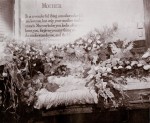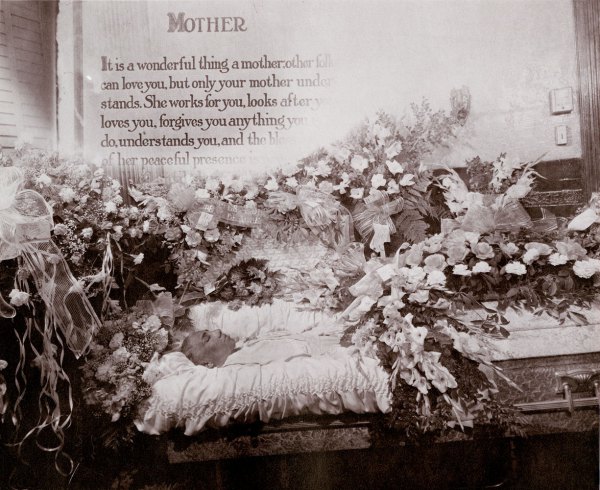
(Photograph by James VanDerZee—© Donna Mussenden VanDerZee)
Dying with dignity and mourning with dignity are both privileges that historically, have not always been afforded to African-Americans. Even today, the predominant images of Black death in America, are grainy black-and-white pictures of public lynchings, or the bodies of victims captured on cell phones. It’s “black bodies swinging” as white men, women, and children look on in apathy or black bodies splayed on the ground while black men, women, and children look on in horror and sadness. The dead black body is a political tool, a harsh image meant to inspire and mobilize the people. It’s a jarring reminder of what hate is, and what life is for so many people. It’s also an object of voyeurism and public spectacle. Black death is the deeply suffering wails of black mothers and widows in pain at having to bury a child or husband taken from her. When made public, our deaths often don’t get the chance to be personal, peaceful, serene, or celebratory.
Images of death and funerals can offer insight into to how someone might have lived. Many clues about what life was like in a particular point in history can be gleaned from the hauntingly peaceful images known as Victorian-era mourning photography. The large collections of images of babies and toddlers, for example, point to high infant and child mortality rates.
The phrase “Victorian-era” usually conjures up images of pale, stern-looking individuals, intently staring into the camera. Access to photography, at this point in history, was a rarity and a luxury often afforded to the middle and upper classes. For many at the time, family photo albums were full of images centered around death and mourning. The extremely rare images of African-American mourning produced during this era are a deeper look at a part of black life in American often unseen. These are images are not only of death, but of black people in post-slavery, Jim Crow America, that were educated business owners, homeowners and property owners. These images were also of people that had managed to save enough money to give their loved one a degree of public dignity they weren’t afforded while alive. The materialism aspect of these images can’t be denied – that the ability to have a “proper” death requires money and social standing. Even today, mourning and death are expensive endeavors.
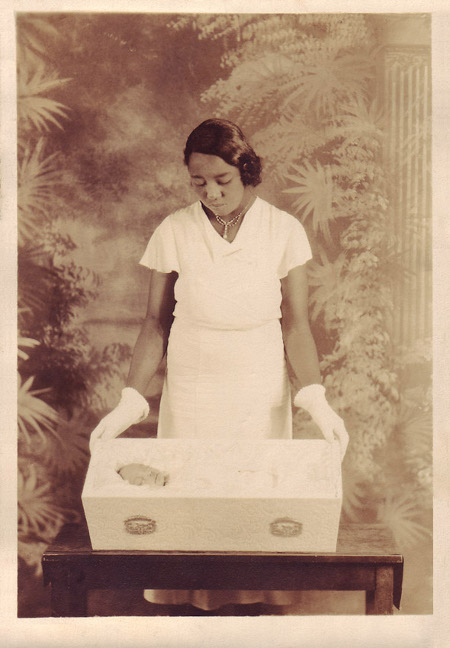
A matt gelatin silver print from the 1930’s showing a mother looking at her child in its coffin.
Photographed by Sandy’s Studio, 146 Broad Street, Jacksonville, Florida, identified by a wetstamp on the reverse of the print.
via.
Portraits like these are images of black motherhood and mourning that are not usually seen or imagined.
James VanDerZee (1886 – 1983), best known for his portraits of influential figures in the Harlem Renaissance in the 1920’s, also offered the service of funerary portraits at his Harlem studio. African-Americans often made a pilgrimage of sorts to Harlem for VanDerZee’s photo services. The rich imagery of his funerary portraits are another glimpse at black middle-class life in America. These images were also sent to relatives who could not attend a funeral.
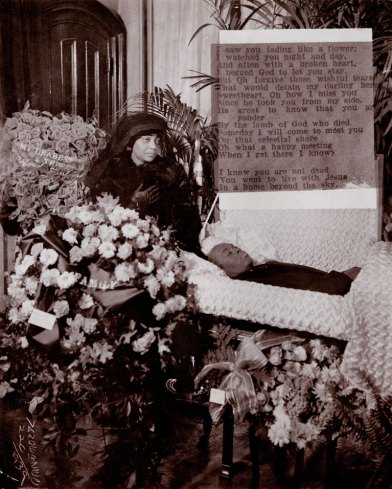
Untitled, 1939.
Photograph by James VanDerZee—© Donna Mussenden VanDerZee.
Today, black death still remains to be premature loss. Which is why grand funerals, especially for the elder members of our community, are a victory celebration of sorts, a homecoming. Images of grand funerals, usually from the south, have gone viral on many occasions. These images of the funeral of New Orleans woman Miriam Burbank might seem comical or over-the-top to some, but they are a celebration of a long life in a community of people who have a lower than average life expectancy.
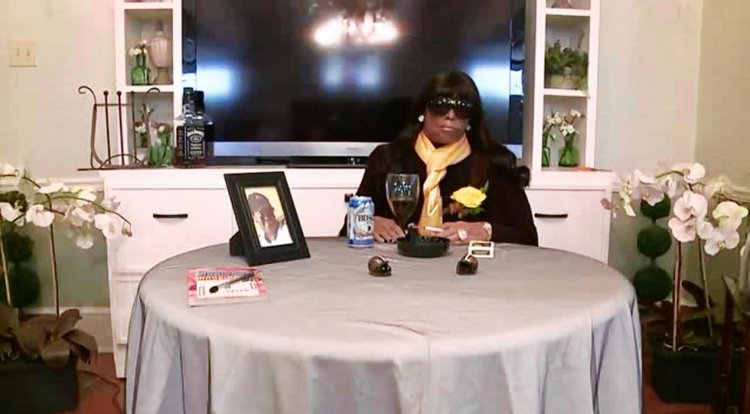
Images of the 2014 funeral of New Orleans Woman Miriam Burbank, via.
How much of their lives do women like Miriam Burbank spend working? Perhaps her vices — cigarettes and liquor, were a small respite from the hard work that so many black women endure as the “backbones” of their communities.
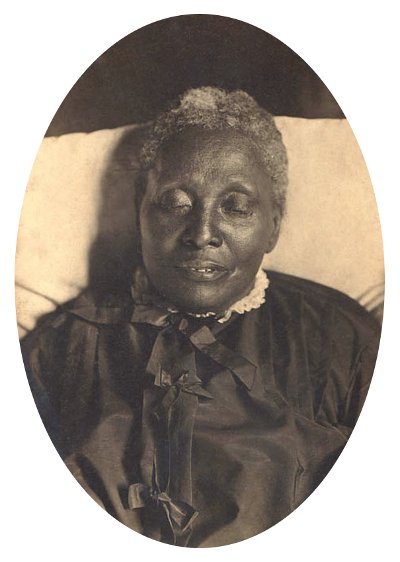
A silver gelatin print showing an elderly black woman identified on the reverse of the mount as Mrs Della Powell. An inked inscription reads:
Mrs Della Powell. Mother died 1894
of Mrs Lillie Powell. Mother died July 10, 1935
of Mrs Hazel Lyden Henderson
The 1880 census shows a Della Powell living in Friendship, Crockett County, Tennessee, close to the Arkansas border. Born in 1840, at the time of the census she was working on a farm. She was unmarried, but she had at least 6 children, including Lillie, born in 1876. Della was born in Tennessee, as were her parents before her.
Photographed by Carroll of Walnut Ridge, Arkansas, identified by a blindstamp on the mount. The mount, which is not shown in the scan, is somewhat stained and has irregularly cut edges.
For all people, life and death are interconnected, with one influencing the other. The images of our bodies in death and mourning are also connected to our lives. Victorian-era mourning images of African-Americans are part of an ongoing history of the many ways we try to earn and create what for others is seen as a right – the right to die with dignity and be mourned with dignity. Mourning images while sad and to an extent, morbid, are also images of hope and of peace. They are the hope for a better life and a picture of a right to humanity that has been claimed.

